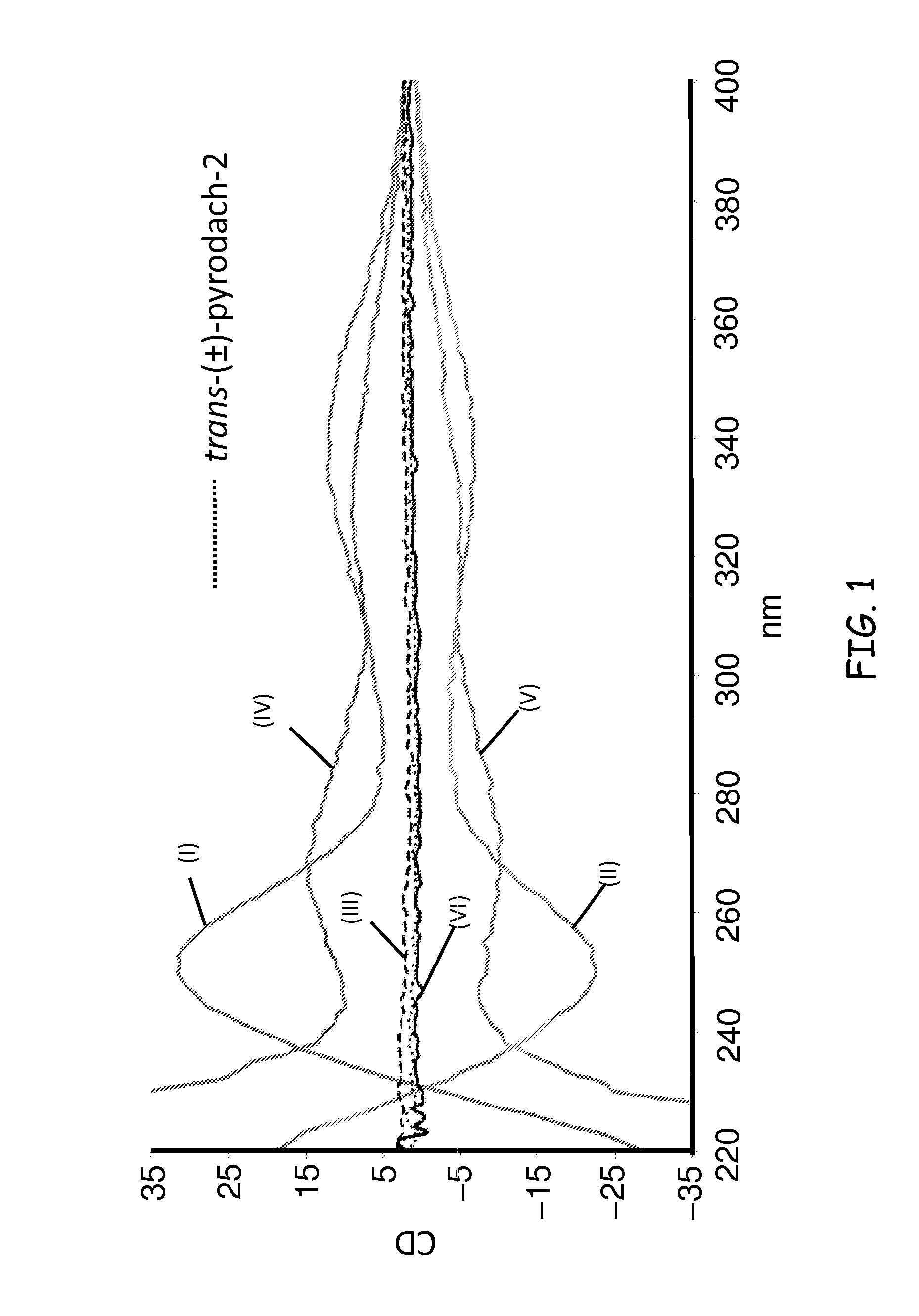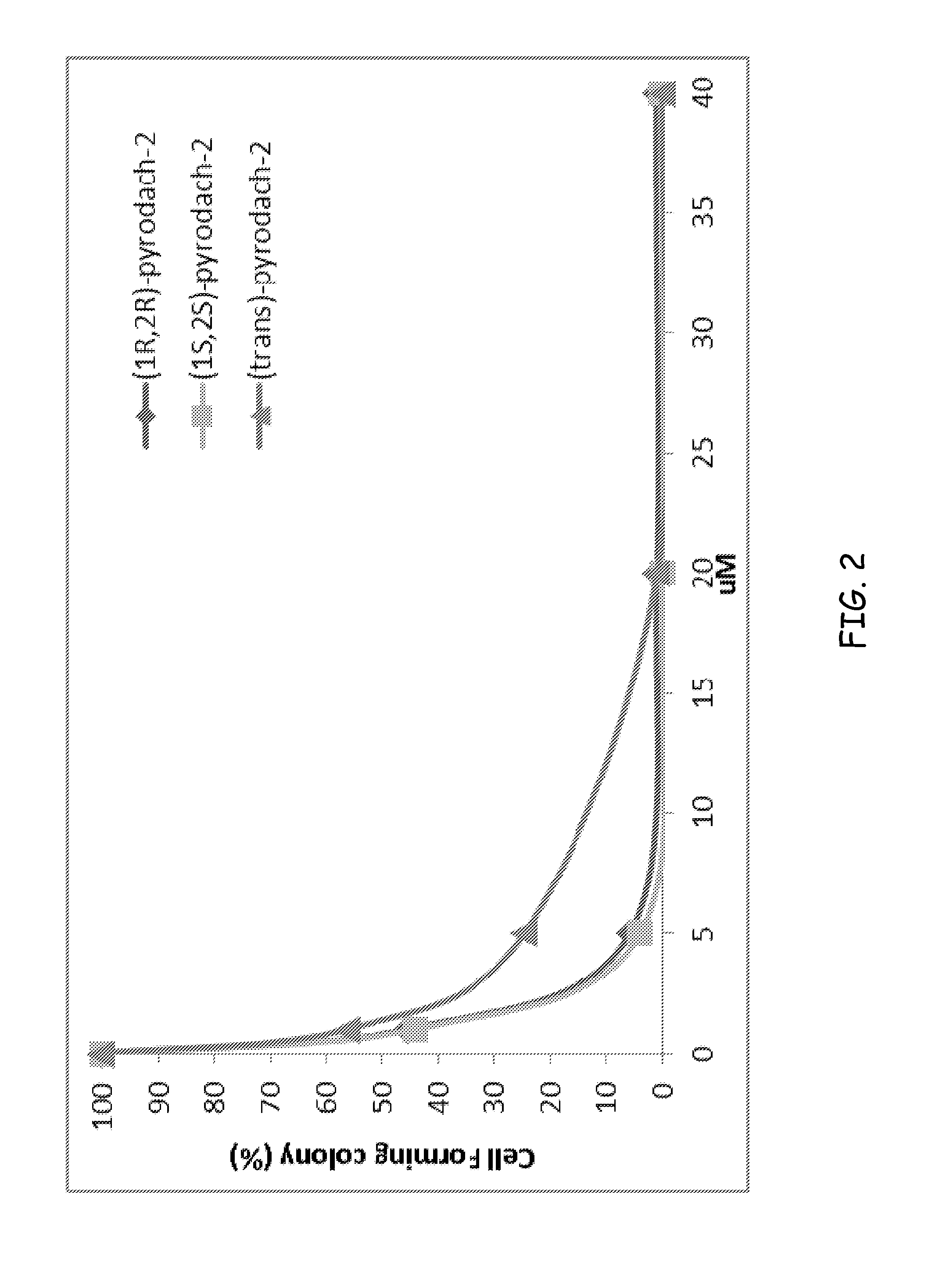Phosphaplatins and their use for treatment of cancers
- Summary
- Abstract
- Description
- Claims
- Application Information
AI Technical Summary
Benefits of technology
Problems solved by technology
Method used
Image
Examples
example 1
Synthesis of (1R,2R)-pyrodach-2 [formula (I)]
[0056]As a starting material for forming a platinum(II) complex, cis-diiodo- or cis-dichloro-(trans-(1R,2R)-(−)-1,2-cyclohexanediamine)platinum(II) was formed by reacting K2PtI4 or, more preferably K2PtCl4, respectively with (1R,2R)-(−)-1,2-cyclohexanediamine. The cis-diiodo-((1R,2R)-(−)-1,2-cyclohexanediamine)platinum(II) or, preferably, the cis-dichloro-((1R,2R)-(−)-1,2-cyclohexanediamine)platinum(II) then was dissolved with sodium pyrophosphate decahydrate in distilled water, pH 8, and the resultant mixture is incubated at 40° C. for 15 hours. Following the incubation period, the solution was concentrated by rotary evaporation and was filtered to remove any unreacted starting material. Rapidly lowering the pH to approximately 1.0 by addition of 1-N nitric acid precipitated the product. The precipitation was completed by cooling at about 0° C., and the product was isolated by vacuum filtration and washed with cold water and acetone. The...
example 2
Synthesis of (1S,2S)-pyrodach-2 [formula (II)]
[0057]Enantiopure (1S,2S)-1,2-cyclohexanediamine(pyrophosphato) platinum(II) was prepared in a manner analogous to the method described in Synthesis Example 1, except that cis-diiodo- or cis-dichloro-(trans-(1S,2S)-(+)-1,2-cyclohexanediamine) platinum(II) was used as a starting material in the place of cis-diiodo- or cis-dichloro-(trans-(1R,2R)-(−)-1,2-cyclohexanediamine) platinum(II), respectively. The synthesis yielded enantiopure (1S,2S)-pyrodach-2.
example 3
Synthesis of (1R,2R)-pyrodach-4 [formula (IV)]
[0058]The starting material from Synthesis Example 1, i.e., cis-diiodo- or cis-dichloro-(trans-(1R,2R)-(−)-1,2-cyclohexanediamine) platinum(II) and sodium pyrophosphate decahydrate was dissolved in distilled water, pH 8, and the resultant mixture was incubated at 40° C. for 15 hours. Following the incubation period, an aliquot of 30% H2O2 was added to the reaction mixture, and the reaction mixture was allowed to react for an additional 3 hours. The solution then was concentrated by rotary evaporation and was filtered to remove any unreacted starting material. Rapidly lowering the pH to approximately 1.0 by addition of 1-N nitric acid precipitated the product. Precipitation was completed by cooling at about 0° C., and the product was isolated by vacuum filtration and washed with cold water and acetone. The synthesis yielded enantiopure (1R,2R)-pyrodach-4.
PUM
| Property | Measurement | Unit |
|---|---|---|
| Fraction | aaaaa | aaaaa |
| Electrical conductance | aaaaa | aaaaa |
| Electrical resistance | aaaaa | aaaaa |
Abstract
Description
Claims
Application Information
 Login to View More
Login to View More - R&D
- Intellectual Property
- Life Sciences
- Materials
- Tech Scout
- Unparalleled Data Quality
- Higher Quality Content
- 60% Fewer Hallucinations
Browse by: Latest US Patents, China's latest patents, Technical Efficacy Thesaurus, Application Domain, Technology Topic, Popular Technical Reports.
© 2025 PatSnap. All rights reserved.Legal|Privacy policy|Modern Slavery Act Transparency Statement|Sitemap|About US| Contact US: help@patsnap.com



